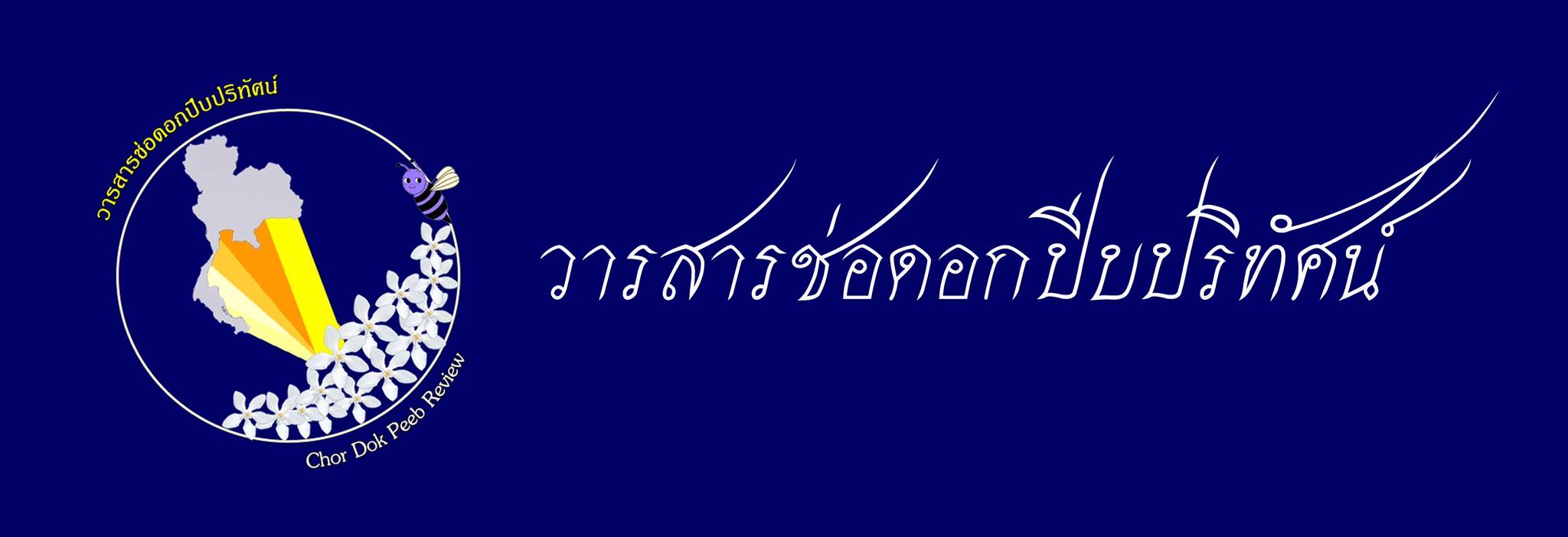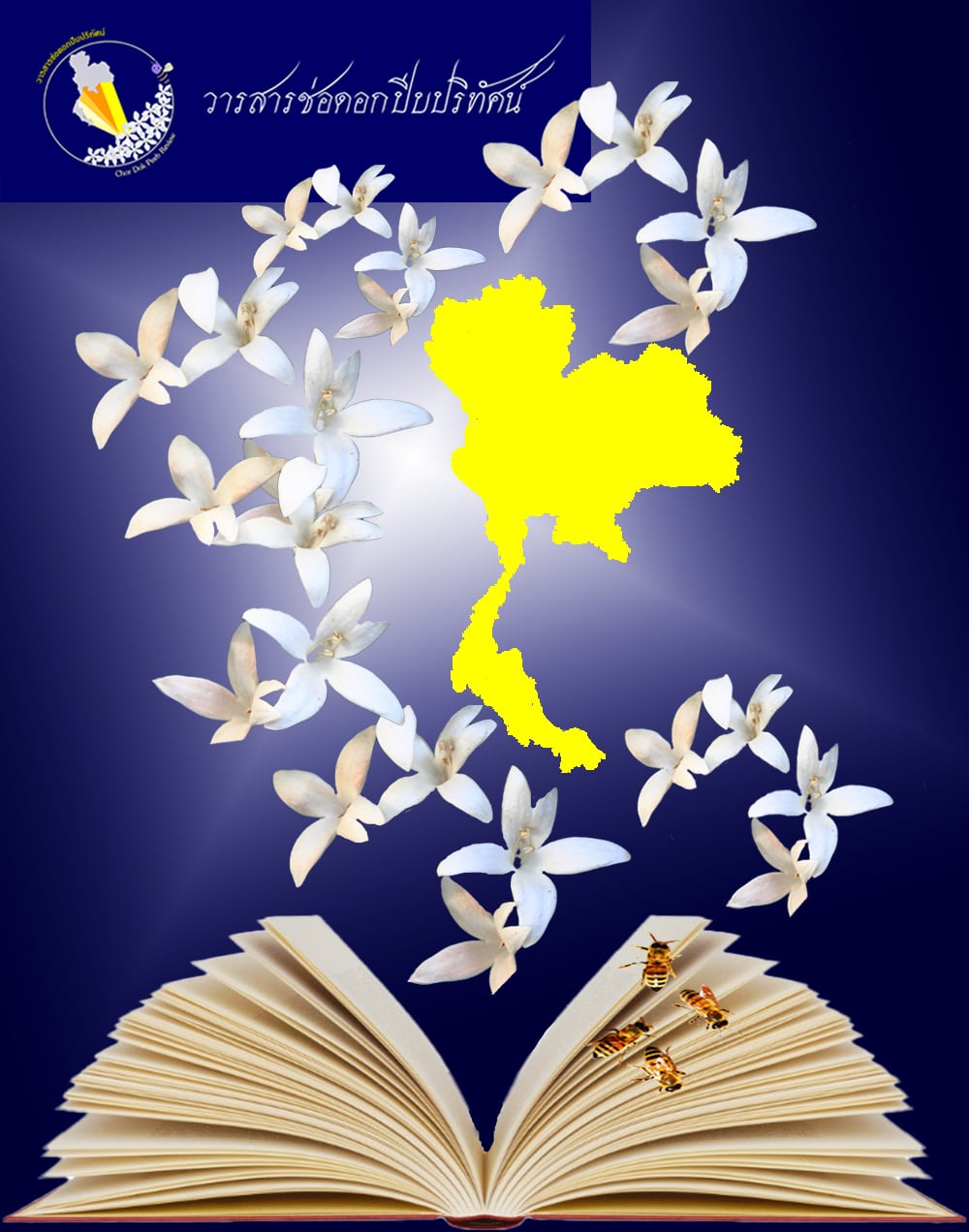Research article Cultural Tourism Routes and Trang Roasted Pork Culture Heritage for Learning in Creative Economy
Main Article Content
Abstract
The objectives of this research are 1) to survey tourist behavior and opinions towards creating Cultural Tourism Routes and Roasted Pork Culture Heritage of Trang province 2) to evaluate the potential of Cultural Tourism Attraction and Trang Roasted Pork Culture Heritage for Learning in Creative Economy and 3) to create Cultural Tourism Routes and Roasted Pork Culture Heritage of Trang province. This research completed in mixed methods which combination of quantitative and qualitative research methods. The sample group used in the research was 940 people. The selection of sample groups based on simple random sampling and purposive sampling. The tools used in the research are questionnaires and interviews form. Then analyzing quantitative data using statistics such as percentage, mean, and standard deviation and qualitative analysis as well as content analysis. The research found that the behaviors and opinions towards creating tourism routes, the tourist’s behavior and opinions of tourists overall were at a high level. The evaluation of Cultural Tourism Attraction and Trang Roasted Pork Culture Heritage found that tourism attraction potential, tourism management potential, and tourism capacity potential were at a high level respectively and Cultural Tourism Routes and Roasted Pork Culture Heritage of Trang province found that tourist attractions with cultural value can be linked together to form a tourist route called “ The charm of cultural tourism, the Legend of Trang's Roasted Pork” There is a one-way travel route arrangement include Trang Dim Sum breakfast restaurant, Tha-Chin Village, Tham-Kong Yia Shrine, Sino-Portuguese architecture building, Na Muen Sri Woven Cloth, Pa Yang Roasted Pork Community, Kirirat House, Trang Roasted Pork Factory, Phraya Ratsadanupradit Mahison Phakdi Monument. The overall appropriateness of Cultural Tourism Attraction and Trang Roasted Pork Culture Heritage for Learning in Creative Economy were at high level.
Article Details

This work is licensed under a Creative Commons Attribution-NonCommercial-NoDerivatives 4.0 International License.
Journal of TCI is licensed under a Creative Commons Attribution-NonCommercial-NoDerivatives 4.0 International (CC BY-NC-ND 4.0) licence, unless otherwise stated. Please read our Policies page for more information...
References
กรมทรัพย์สินทางปัญญา. (2549). ประกาศกรมทรัพย์สินทางปัญญา เรื่องการขึ้นทะเบียนสิ่งบ่งชี้ทางภูมิศาสตร์หมูย่างเมืองตรัง. นนทบุรี: กระทรวงพาณิชย์.
การท่องเที่ยวแห่งประเทศไทย. (2558). ข่าวกิจกรรมส่งเสริมการท่องเที่ยว. สืบค้น 2563, ตุลาคม 9, จาก https://www.tat.0r.th/th/news.
กันยาวี หัวเขา. (2563). ประธานชมรมหมูย่างตรัง. สัมภาษณ์. เมื่อวันที่ 5 มิถุนายน 2563.
ทิพวัลย์ รามรง และชัยรัตน์ วงศ์กิจรุ่งเรือง. (2564). ศักยภาพอาหารท้องถิ่นในการส่งเสริมการท่องเที่ยวผ่าน
อาหารท้องถิ่น กรณีศึกษาจังหวัดตรัง เมืองคนช่างกิน. วารสารสังคมศาสตร์และมนุษย์ศาสตร์ มหาวิทยาลัยเกษตรศาตร,. 47(2), 59-74.
พรรณี สวนเพลง และคณะ. (2559). แผนยุทธศาสตร์การท่องเที่ยวเพื่อการเรียนรู้เกี่ยวกับอาหาร.
กรุงเทพฯ: สำนักงานคณะกรรมการส่งเสริมวิทยาศาสตร์ วิจัยและนวัตกรรม.
วงษ์ปัญญา นวนแก้ว, ปรัชญา นวนแก้ว, ณัฐวุฒิ พรหมเทียน, ณัชพล ปานงาม และวันชัย เหมืองหม้อ. (2562). ปัจจัยที่ส่งผลกระทบต่อการตัดสินใจท่องเที่ยวในภาคเหนือของประเทศไทย. วารสารโครงงานวิทยาการคอมพิวเตอร์และเทคโนโลยีสารสนเทศ,. 5(1), 95-103.
วิมลรัตน์ บุญศรีรัตน์. (2560). แนวทางการจัดการมาตรฐานอาหารเพื่อการท่องเที่ยวในจังหวัดภูเก็ต. (วิทยานิพนธ์ ศิลปศาสตรมหาบัณฑิต). สถาบันบัณฑิตพัฒนบริหารศาสตร์, คณะการจัดการท่องเที่ยว, สาขาการจัดการท่องเที่ยวแบบบูรณาการ.
สริตา พันธ์เทียน. (2560). การท่องเที่ยวเชิงอาหารไทย: แนวทางการพัฒนาและแก้ไขปัญหาการจัดการท่องเที่ยวในเขตจังหวัดลุ่มแม่น้ำภาคกลางโดยใช้แนวคิดเศรษฐกิจสร้างสรรค์. วารสารมหาวิทยาลัยนราธิวาสราชนครินทร์ สาขามนุษย์ศาสตร์และสังคมศาสตร์, 5(2).
สำนักงานส่งเสริมการจัดประชุมและนิทรรศการ. (2565). Soft Power อำนาจแห่งความสร้างสรรค์เพื่อสรรค์
สร้างเศรษฐกิจไทย. สืบค้น 2567, ตุลาคม 20, จาก https://www.businesseventsthailand.com/th/press-media/news-press-release/detail/1461-soft-power-the-power-of-creativity-to-build-the-thai-economy
เสกสรรค์ สนวา, สุพัฒนา ศรีบุตรดี, พงศ์สวัสดิ์ ราชจันทร์ และนภัสภรณ์ ภูวตานนท์ ณ มหาสารคาม. (2563).
การจัดการแหล่งท่องเที่ยวเชิงวัฒนธรรมตามวิถีชีวิตของคนในชุมชน. วารสารการบริหารการปกครองและนวัตกรรมท้องถิ่น, 4(1), 259-276.
อัญชลี สมใจ และพันธุ์รวี ณ ลำพูน. (2563). พฤติกรรมและความต้องการของนักท่องเที่ยวที่มีต่อ
การท่องเที่ยวเชิงวัฒนธรรม ตำบลบางโฉลง อำเภอบางพลี จังหวัดสมุทรปราการ. วารสารศิลปศาสตร์ปริทัศน์, 15(2), 13-27.
Abdelhamied, H. (2011). Customers' perceptions of floating restaurants in Egypt,
Anatolia. 22:01, 1-15.
Dickman, S. (1996). Tourism: An Introductory Text. (2nd ed). Sydney: Hodder Education.
Cochran, W. G. (1953). Sampling Techiques. New York: John Wiley & Sons. Inc.
Roscoe, J.T. 1975. Fundamental Research Statistics for the Behavioral Sciences. 2nd ed. New York: Holt, Rinehart and Winston.
World Tourism Organization. (2012). Global report on food tourism. Marid: The World
Tourism Organization.


